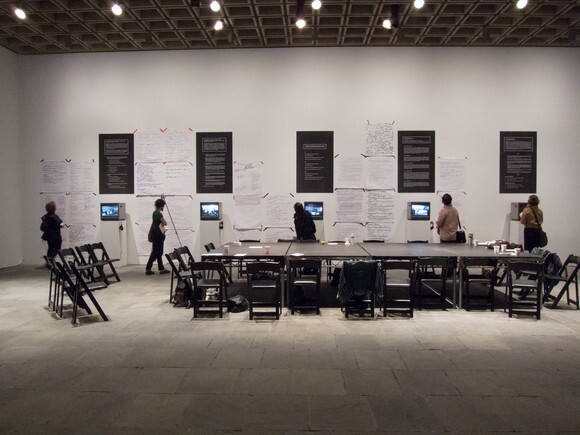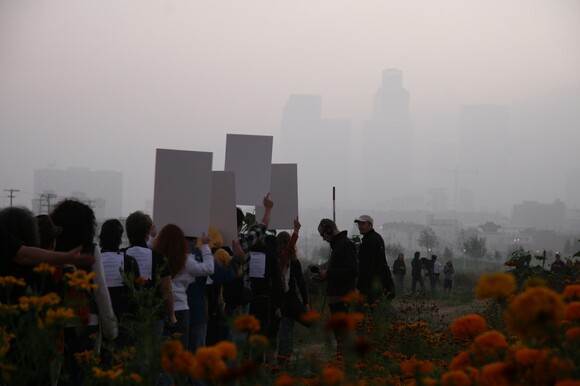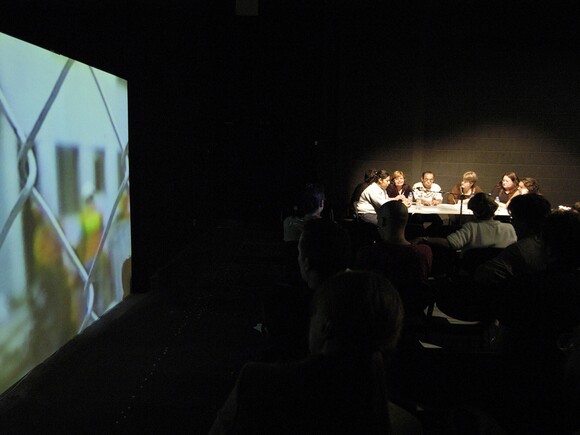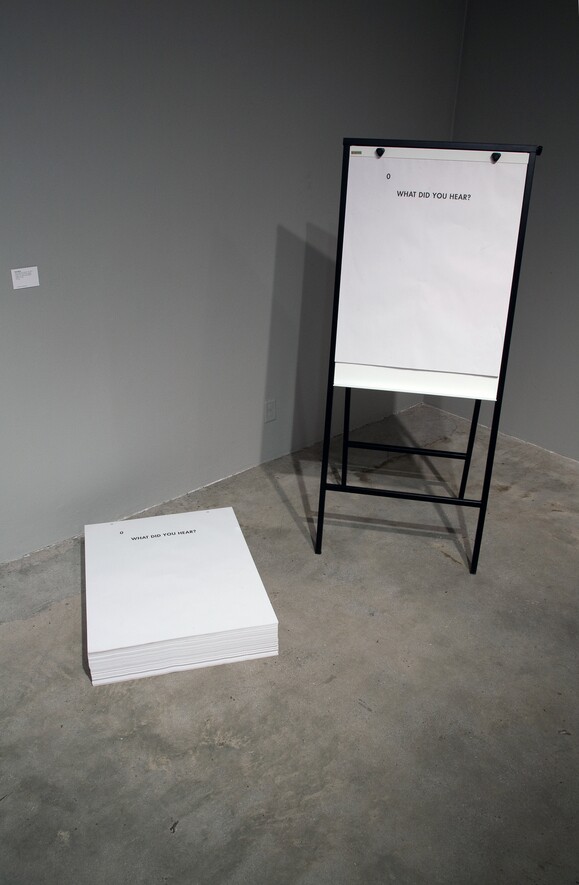How Can Artists and the Eastside Generate Change Together?

In Partnership with SOC(i)AL: Art + People, a series of discussions around LA about Socially Engaged Art, September to November 2012. Instigated by Anne Bray of Freewaves.org
For my next interview with artists and organizers as part of the SOCiAL: Art + People initiative on socially-engaged art in Los Angeles, I had the pleasure to speak with Elizabeth Blaney and Dont Rhine, who work together in the collective Ultra-red and engage with other activist organizations in the city. They are both deeply invested in East Los Angeles and not only asking how artists can work with communities to create change, but also to investigate which communities and what change and through what collaborative process. Elizabeth and Dont will gather with many other collaborators at Self-Help Graphics in Boyle Heights on Saturday November 17th at 4pm to discuss these issues as they apply to East Los Angeles housing, public health, grassroots organizing, and collective creative empowerment.
Sue Bell Yank: What was the impetus of this event?
Dont Rhine: To begin, I should mention that as members of the art collective, Ultra-red, Elizabeth [Blaney] and I have been working together on art projects in Los Angeles and abroad since 1997 when Elizabeth first joined the collective.
Elizabeth Blaney: In addition to being a member of the art collective, I have also been a organizer with Union de Vecinos in Boyle Heights since 1996. Union de Vecinos formed in 1996 when the city announced plans to demolish the homes of over 1200 families living in public housing in East Los Angeles. Rather than simply give up and walk away from their communities, an initial thirty-six families decided to stay and fight for their right to housing. Leonardo Vilchis, also with Union de Vecinos and Ultra-red, as well as myself chose in that moment to support those families and follow their lead. [For more on the history of Pico Aliso see here.]

Dont Rhine: One of the lessons to be learned from that history is that there exist very clear differences in how one might understand terms like "community" and "change." When the city, the Housing Authority, the police, and developers looked at the public housing, "community" meant for them a different group of people than the ones who actually lived there. Since the neighborhood did not resemble the middle class image of single family houses with middle class incomes and values, "change" signified the process by which one group of residents were displaced to make way for another. On the flip side, the residents of Pico Aliso knew they were a community and as such the rightful authors and beneficiaries of any process of change that would impact them. Change had to begin with their aspirations and their ideas about justice and opportunity.
What then is the relationship between the communities of working poor people and artists? This question has been at the center of Ultra-red's practice from the beginning. To simply say that artists need to work with "the community" to create "change" is not enough. We have to ask ourselves which community and what kind of change are we talking about?
Such questions are not simply rhetorical. That is to say, after nearly two decades of collaboration, Ultra-red and Union de Vecinos have some ideas about how artists can work with low-income people who are organizing themselves in East Los Angeles. On the 17th we look forward to inviting others to join us in further investigating what such a collaboration might look and sound like.

Sue Bell Yank: How does the central question of this event ("How can artists and the Eastside generate change together?") resonate with you and your work?
Elizabeth Blaney: In many cities across the world, art districts have had a gentrifying impact on poor neighborhoods. Given the gentrification that has already occurred in the eastside especially in Boyle Heights, it is imperative that artists work together with community residents to ensure that whatever change does occur is not a gentrifying one.
Sue Bell Yank: What is your approach to collaboration with both other artists and organizations, and with community?
Elizabeth Blaney: My approach is starting with where people are at and understanding that we have expertise and experience that we bring to the table in identifying and coming up with solutions to community problems. My approach also includes working with those most in need and most impacted by the social, economic, political, and environmental conditions in our community.
Sue Bell Yank: What are some of the major structural challenges that make this integration difficult, and how do think they can be mitigated?
Dont Rhine: Often, the entry point for artists and their institutions is to begin from a place of self interest; what is the role of art? The challenge, however, is practically realizing that not all artists and art institutions share the same interest in every situation. The call went out from LA Freewaves and Self-Help Graphics to initiate a conversation about how artists and communities might work together to create change in East Los Angeles. Maybe asking how artists and the community can work together is not the place to begin. Rather, let's begin by listening to the histories that precede this moment. Let's make ourselves open to learning how working poor residents of East Los Angeles have already created a culture of resistance and community. Then artists can start to experiment with ways to support those collective efforts that have already begun. For these reasons, a big part of the event on the 17th is to change the question and turn it into an invitation.

Sue Bell Yank: What do you hope people walk away with from this event?
Elizabeth Blaney: That the audience undergoes a reflective analysis of how it is important that arts districts have to support/supplement what the needs are of community members; how to not fall into the trap of creating a space in the name of art that reflects middle to upper class values in a community that is primarily low income; that it is not about changing what is there to look like something from another community but is more reflective of, accessible to, and inclusive of low income neighborhoods and their needs.
Union de Vecinos is a network of neighborhood committees in Boyle Heights and the City of Maywood. Each committee engages the process of building community where working families come together to SEE the conditions of their neighborhood, REFLECT on the root causes for these conditions, and ACT to bring about real, concrete change. For more information go to: www.uniondevecinos.net
Ultra-red is an art collective founded in 1994 by two AIDS activists in Los Angeles. Today Ultra-red has a dozen members conducting art-based research alongside social movements in the United States, Germany, and Britain. Ultra-red seek to shift the aim of cultural action from the "art world" to that of popular education. For more information go to: www.ultrared.org
Dig this story? Sign up for our newsletter to get unique arts & culture stories and videos from across Southern California in your inbox. Also, follow Artbound on Facebook and Twitter.